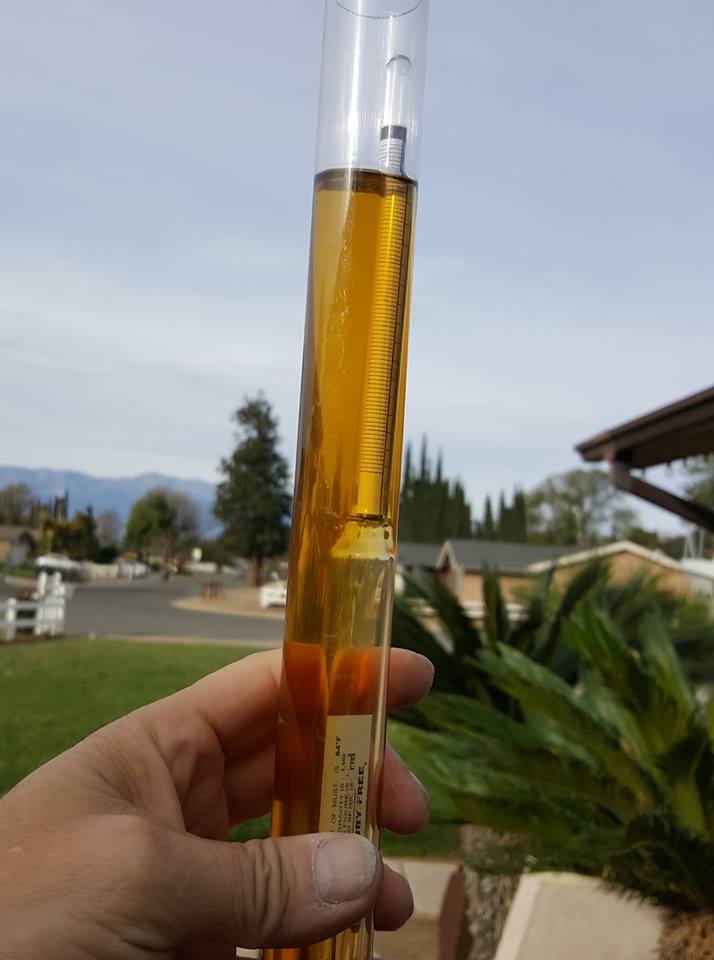Remos112
Well-Known Member
Hello everybody I am a bit puzzeled and could use your advice.
A while back I cultured some dregs from brewery Het Anker harvested from bottles Hopsinjoor.
A went well and I brewed a test extract batch which would give me enough yeast for my intended bigger brew.
Thing is though OG was 1.050 and I just did a Hydrometer test:

The sample was 23c so I corrected it to the right temperature and still ended op with
1.001, my ABV calculator tells me this is 98% attenuation and it would give the beer about 6,4 % ABV.
Is this even possible? The kit was intended to end dry as the package said 1.050-1.005
a week ago it was 1.005 but today it has dropped further.
The beer smells and tastes good, slightly bitter though.
What could be going on here? Wild yeast, some kind of infection perhaps? And most importantly what should I do with the yeast? Keep it for the intended brew, or just toss it and buy another yeast strain and go with that one.
Any comments and help is very much appreciated!
Thanks in advance!
Remi
A while back I cultured some dregs from brewery Het Anker harvested from bottles Hopsinjoor.
A went well and I brewed a test extract batch which would give me enough yeast for my intended bigger brew.
Thing is though OG was 1.050 and I just did a Hydrometer test:

The sample was 23c so I corrected it to the right temperature and still ended op with
1.001, my ABV calculator tells me this is 98% attenuation and it would give the beer about 6,4 % ABV.
Is this even possible? The kit was intended to end dry as the package said 1.050-1.005
a week ago it was 1.005 but today it has dropped further.
The beer smells and tastes good, slightly bitter though.
What could be going on here? Wild yeast, some kind of infection perhaps? And most importantly what should I do with the yeast? Keep it for the intended brew, or just toss it and buy another yeast strain and go with that one.
Any comments and help is very much appreciated!
Thanks in advance!
Remi
Last edited:





































![Craft A Brew - Safale S-04 Dry Yeast - Fermentis - English Ale Dry Yeast - For English and American Ales and Hard Apple Ciders - Ingredients for Home Brewing - Beer Making Supplies - [1 Pack]](https://m.media-amazon.com/images/I/41fVGNh6JfL._SL500_.jpg)
























